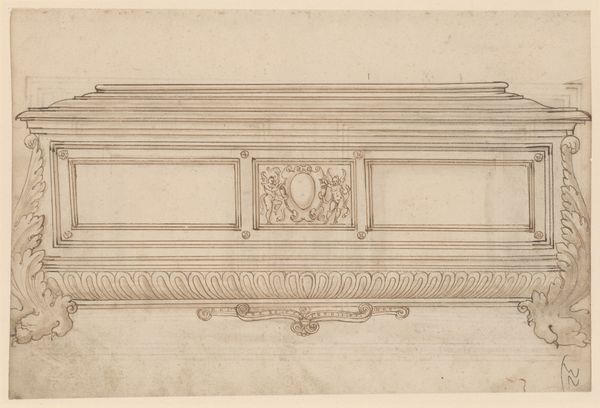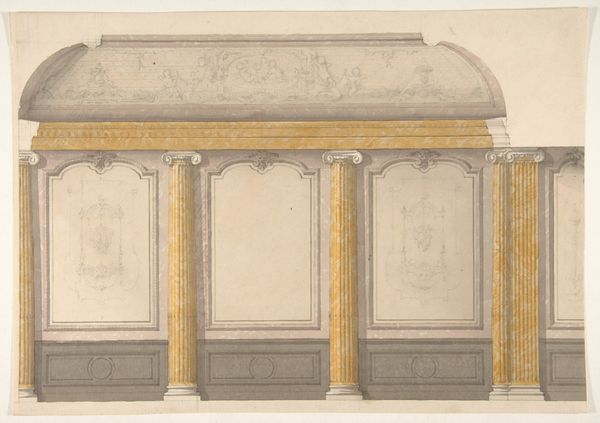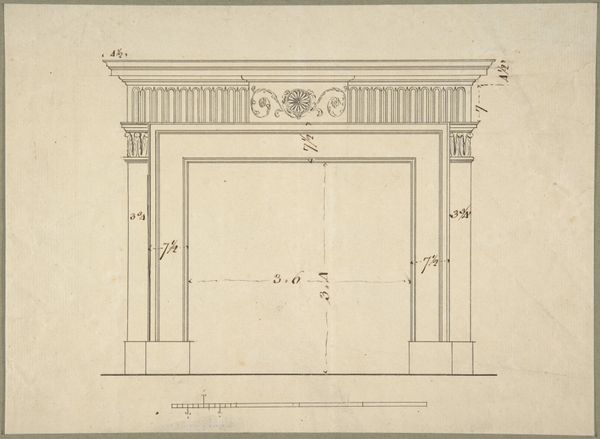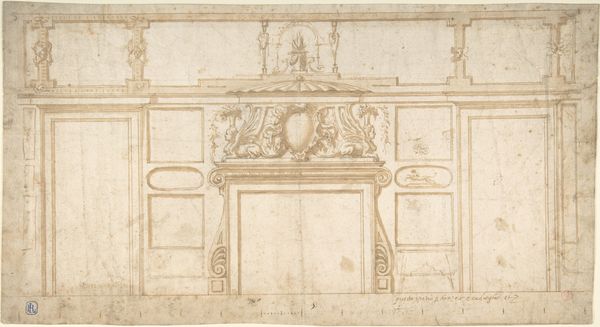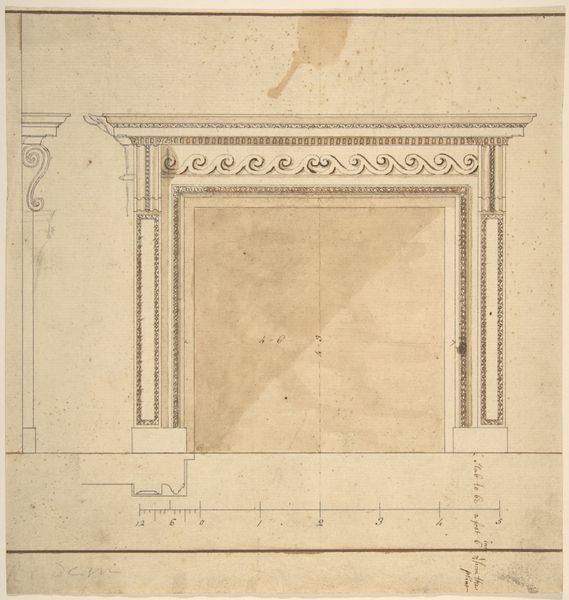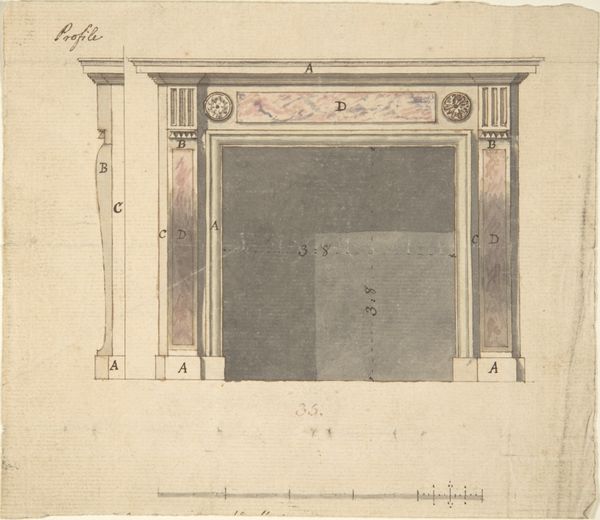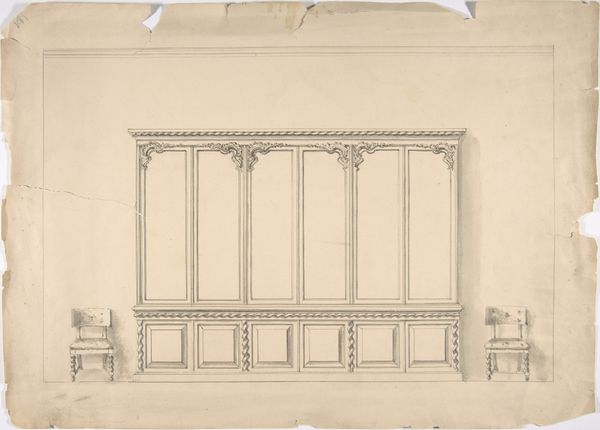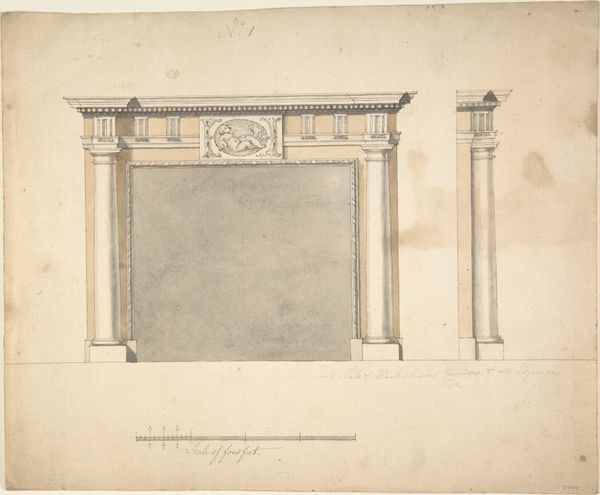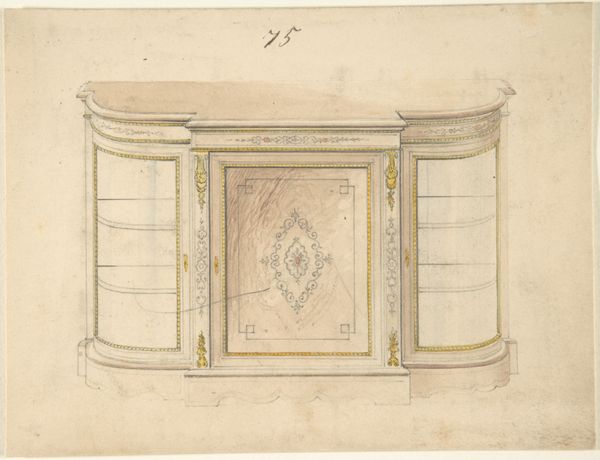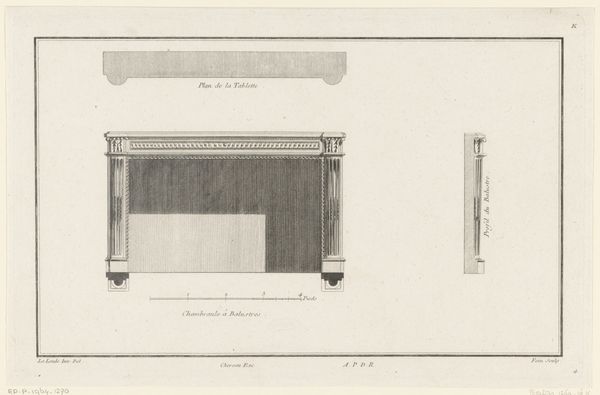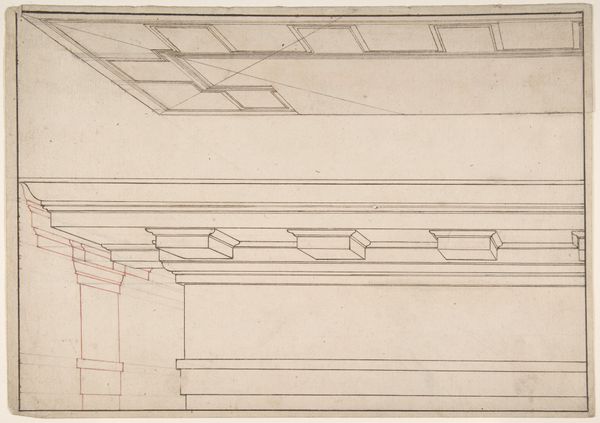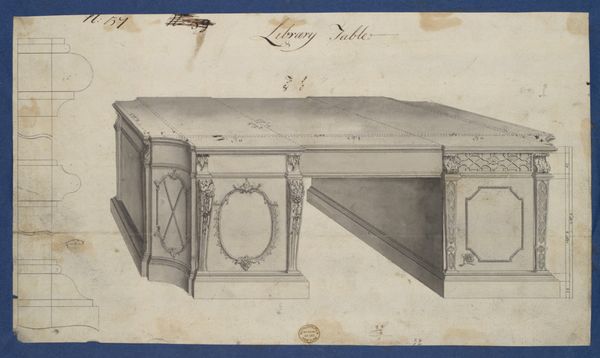
Marcus Aurelius Statue, pedestal, elevation (recto) Marcus Aurelius Statue, pedestal, plan (verso) 1500 - 1560
0:00
0:00
drawing, print, paper, architecture
#
drawing
# print
#
paper
#
form
#
11_renaissance
#
italian-renaissance
#
architecture
Dimensions: sheet: 17 3/16 x 11 9/16 in. (43.7 x 29.3 cm)
Copyright: Public Domain
Editor: Here we have an ink and paper drawing from the Italian Renaissance, sometime between 1500 and 1560. It’s an elevation of the pedestal for the statue of Marcus Aurelius. What do you see in this piece that might not be immediately obvious? Curator: Well, at first glance, it presents itself as a straightforward architectural drawing, right? But consider the power dynamics at play. Renaissance artists were deeply engaged with reviving classical ideals. This drawing isn't just a depiction of a pedestal; it’s an active claiming of imperial Roman authority and its aesthetic language. Who gets to decide whose image deserves to be elevated – quite literally – on a pedestal? And who is being excluded in this act of revivalism? Editor: That’s a great point. I was focused on the clean lines and the craftsmanship, but I hadn’t really thought about the implications of resurrecting these classical symbols. How might the original viewers have perceived this assertion of power? Curator: The intended audience for a drawing like this would have been fellow artists and patrons, elite members of society participating in constructing their own authority, drawing parallels to powerful ancient empires, implicitly suggesting a continuity of power. Think about what classical ideals represented: notions of ideal masculinity, civic virtue, and imperial control. By visually linking themselves to this lineage, they were making very specific claims about their own legitimacy, particularly during a time of intense political and religious upheaval. This piece acts as a stage—empty without the statue—for political power to stand on. Editor: It's fascinating to think about how something that seems so static can be tied to so much dynamic social and political meaning. This really changes how I will think about art going forward! Curator: Absolutely, seeing art as inextricably linked to the forces that shape it encourages us to investigate how art reinforces certain structures of authority and sometimes offers possibilities to resist it.
Comments
No comments
Be the first to comment and join the conversation on the ultimate creative platform.
